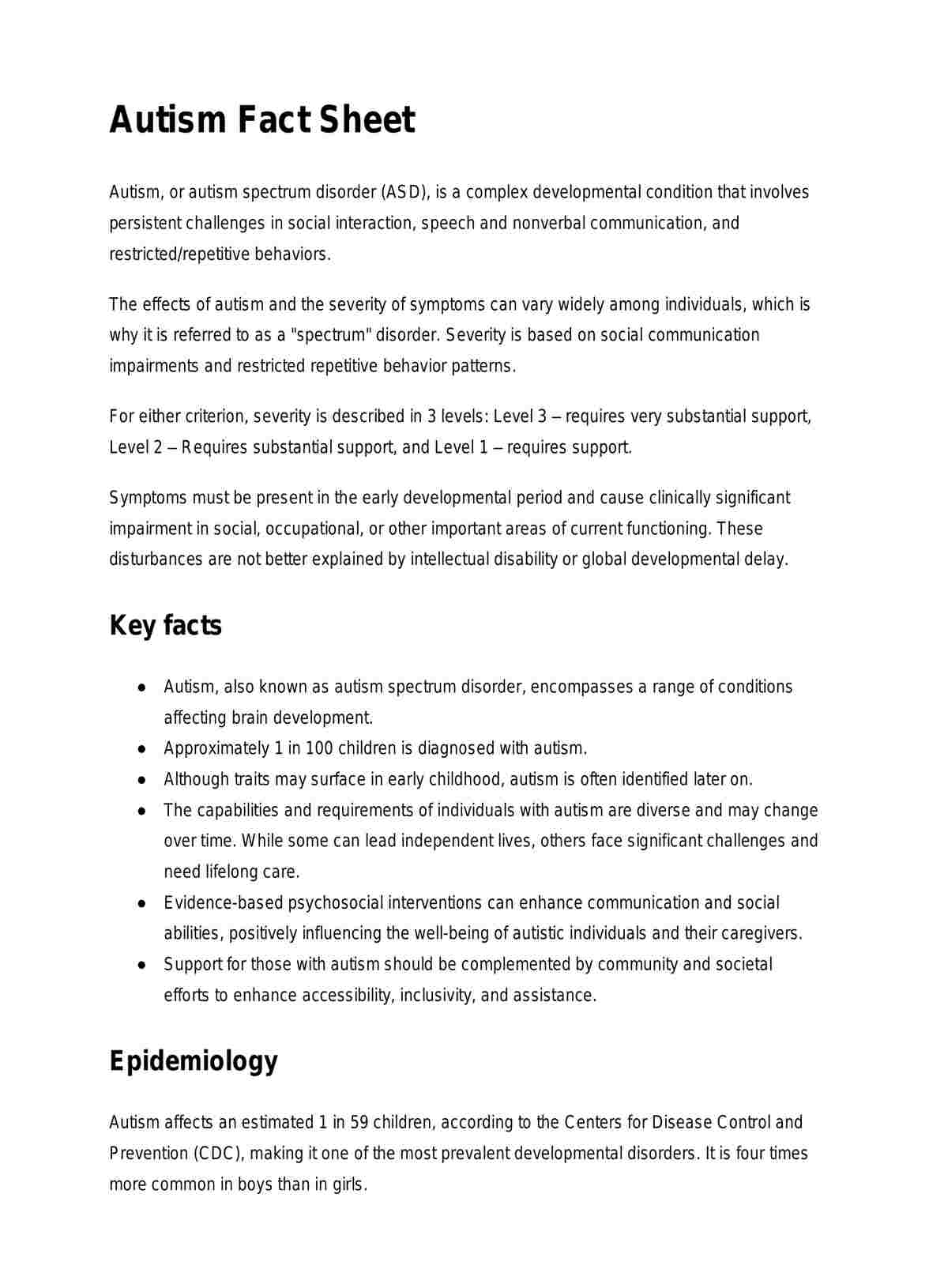Our ASD fact sheet provides an overview of Autism Spectrum Disorder (ASD), how it affects child development, and its early signs. It includes information on the prevalence, symptoms, causes, and resources.

Autism Fact Sheet
Explore how autism differs from other forms of developmental disabilities with this comprehensive Autism Fact Sheet. Download a free PDF for your reference in this guide.
Autism Fact Sheet Template
Commonly asked questions
You can adjust this fact sheet as necessary for your patients. Please remember to give credit to any sources used and ensure the information's accuracy.
An Autism Fact Sheet can be a helpful tool for professionals and individuals seeking information about ASD and how it differs from neurological disorders. It can also serve as a quick reference guide for those who may not be familiar with the disorder and its characteristics.
EHR and practice management software
Get started for free
*No credit card required
Free
$0/usd
Unlimited clients
Telehealth
1GB of storage
Client portal text
Automated billing and online payments











